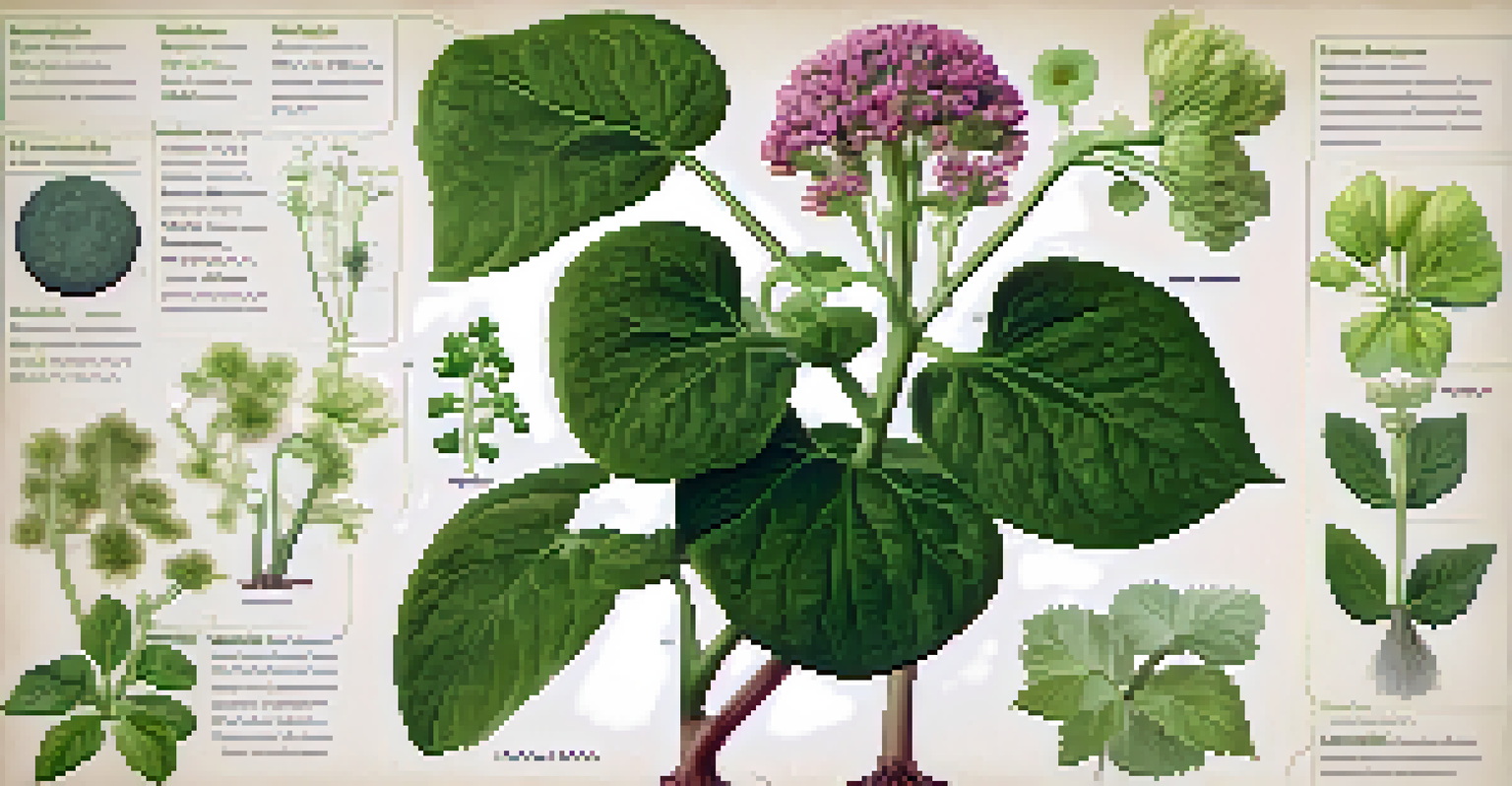The Role of Morphology in Plant Taxonomy and Classification

What is Morphology in Plant Science?
Morphology is the study of the form and structure of organisms, including plants. In the context of plant science, it examines various physical characteristics, such as leaves, stems, and flowers. These traits help scientists understand how different plants are related to one another and how they adapt to their environments.
Morphology, in its broadest sense, is the relationship between the structure and the function of organisms.
For example, the shape of a leaf can indicate how well a plant can conserve water or capture sunlight. By analyzing these morphological features, botanists can classify plants into groups that share similar traits. This classification is crucial for identifying and studying plant diversity across different ecosystems.
In essence, morphology provides a visual and structural framework that aids in the identification and differentiation of plant species. Without it, understanding the vast plant kingdom would be far more challenging.
The Importance of Morphological Characteristics
Morphological characteristics are essential for determining the taxonomy of plants. These traits include flower structure, leaf arrangement, and root systems, which can vary significantly among species. By examining these features, botanists can establish relationships between different plants and classify them accordingly.

Consider how the flower shape of a species might attract specific pollinators. This relationship not only aids in classification but also highlights the ecological roles plants play. Morphology thus serves as a bridge between understanding a plant's physical attributes and its functional significance in nature.
Morphology Aids Plant Classification
Morphological characteristics help botanists identify and classify plants by examining their physical traits.
Additionally, these characteristics can help identify new species or clarify existing classifications. As botanists discover more about plant morphology, they can refine taxonomic categories, ensuring that classifications reflect the true diversity of life.
Morphology vs. Genetics in Classification
While morphology plays a crucial role in plant taxonomy, genetics has become increasingly important in recent years. Genetic analysis can provide insights into the evolutionary relationships between species that may not be evident through morphology alone. This has led to a more comprehensive understanding of plant classification.
The study of plant morphology is essential for understanding the adaptations of plants to their environments.
For example, two plants may look similar morphologically but are genetically distinct. By integrating genetic data with morphological evidence, scientists can create a more accurate picture of plant relationships. This combined approach allows for a deeper understanding of how plants have evolved over time.
However, relying solely on genetics can overlook the importance of morphological traits, particularly in traditional classifications. Therefore, a balanced approach that considers both morphology and genetics is essential for accurate plant taxonomy.
Morphological Variation and Adaptation
Morphological variation among plants is often a result of adaptation to different environments. For instance, plants in arid regions may have thicker leaves to store water, while those in humid areas might have broader leaves to capture more sunlight. These adaptations not only enhance survival but also influence how plants are classified.
This connection between morphology and environmental adaptation illustrates the dynamic relationship between plants and their habitats. By studying these variations, botanists can gain insights into how plants respond to ecological pressures. This understanding is vital for conservation efforts, especially in changing climates.
Genetics Complements Morphology
Integrating genetic analysis with morphological data enhances our understanding of plant relationships and evolution.
Moreover, recognizing these adaptations helps in identifying species that may be vulnerable to environmental changes. By understanding their morphological traits, we can better predict how plants will respond to future challenges.
The Role of Morphology in Field Studies
Field studies rely heavily on morphological characteristics to identify and classify plants in their natural habitats. Botanists often use field guides that illustrate various morphological traits, making it easier to distinguish between similar species. This practical application of morphology is vital for biodiversity assessments and ecological research.
During fieldwork, observing morphological features allows researchers to gather important data about plant populations and their distributions. For instance, identifying a unique leaf shape may indicate the presence of a rare species. Such findings can inform conservation strategies and habitat management.
Furthermore, these field observations contribute to the larger body of knowledge in plant taxonomy. Each new identification adds to the understanding of plant diversity and the intricate relationships within ecosystems.
Challenges in Morphological Classification
Despite its importance, morphological classification faces several challenges. One major issue is the occurrence of convergent evolution, where unrelated species develop similar traits due to adapting to similar environments. This can lead to misclassification if only morphological traits are considered.
Additionally, morphological plasticity, where a single species exhibits different forms in different environments, can complicate classification. For example, the same plant species may have different leaf shapes depending on light availability. Such variability makes it challenging for botanists to categorize plants accurately.
Adaptations Reflect Environmental Needs
Morphological variations among plants often indicate adaptations to different environments, influencing their survival and classification.
To overcome these challenges, researchers must combine morphological data with ecological and genetic information. This holistic approach can help clarify classifications and enhance our understanding of plant diversity.
Future Directions in Plant Taxonomy
As technology advances, the future of plant taxonomy looks promising, with new methods for studying morphology on the horizon. Innovations such as imaging techniques and 3D modeling can provide more detailed insights into plant structures. These advancements may lead to more precise classifications and a deeper understanding of plant relationships.
Moreover, integrating morphological data with genetic and ecological information will likely become the norm in plant taxonomy. This comprehensive approach can help address some of the current challenges in classification, leading to more accurate representations of plant diversity.

Ultimately, as our understanding of morphology continues to evolve, so too will our ability to classify and conserve plant species. This evolution is essential for protecting biodiversity in an ever-changing world.